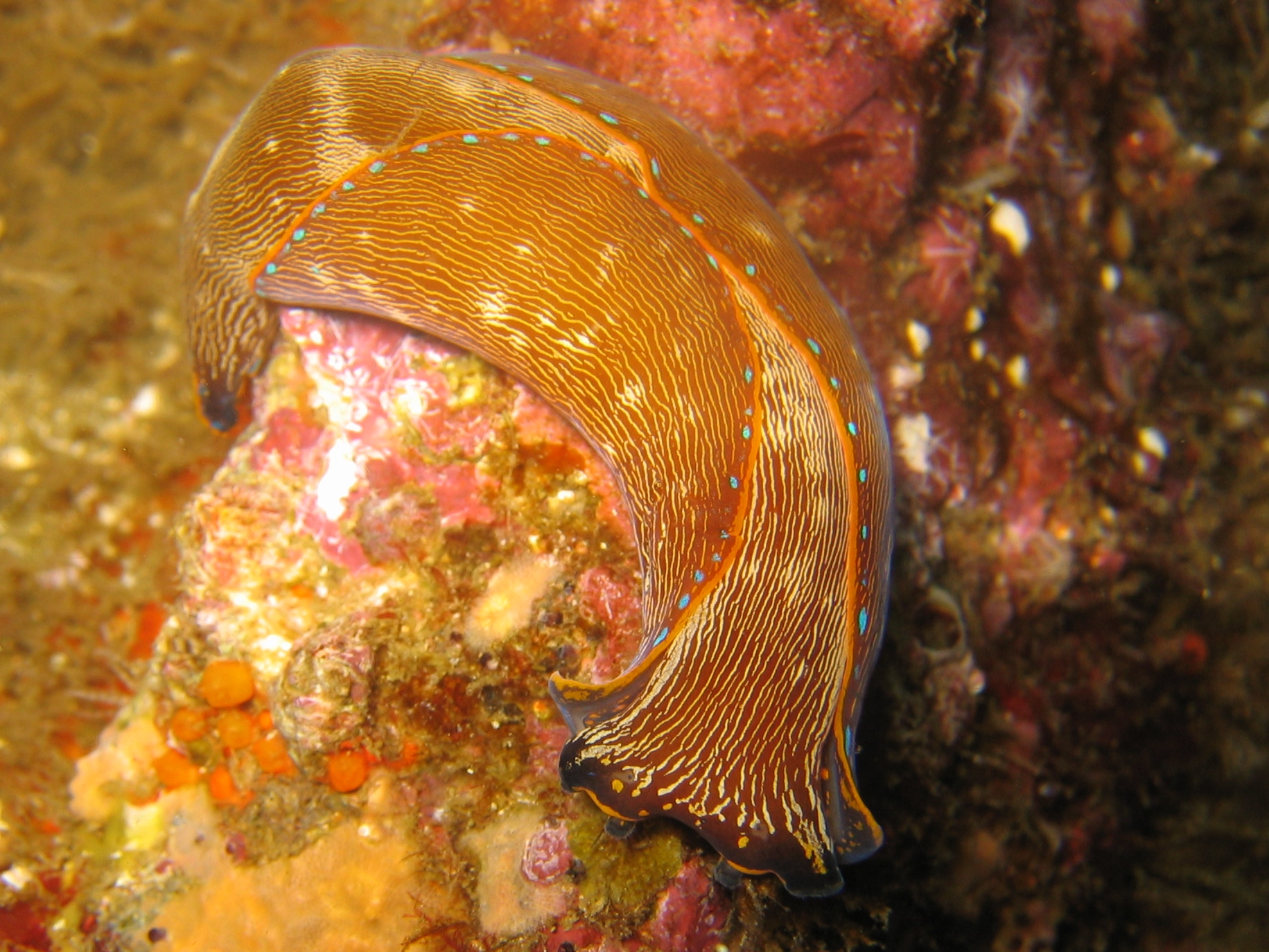Navanax Inermis on:
[Wikipedia]
[Google]
[Amazon]
''Navanax inermis'', common name the California aglaja, is a large

species
A species () is often defined as the largest group of organisms in which any two individuals of the appropriate sexes or mating types can produce fertile offspring, typically by sexual reproduction. It is the basic unit of Taxonomy (biology), ...
of predatory
Predation is a biological interaction in which one organism, the predator, kills and eats another organism, its prey. It is one of a family of common feeding behaviours that includes parasitism and micropredation (which usually do not kill ...
sea slug
Sea slug is a common name for some Marine biology, marine invertebrates with varying levels of resemblance to terrestrial Slug, slugs. Most creatures known as sea slugs are gastropods, i.e. they are Sea snail, sea snails (marine gastropod moll ...
, a marine opisthobranch
Opisthobranchs () is a now informal name for a large and diverse group of specialized complex gastropods which used to be united in the subclass Opisthobranchia. That taxon is no longer considered to represent a monophyletic grouping.
Euopistho ...
gastropod
Gastropods (), commonly known as slugs and snails, belong to a large Taxonomy (biology), taxonomic class of invertebrates within the phylum Mollusca called Gastropoda ().
This class comprises snails and slugs from saltwater, freshwater, and fro ...
mollusk
Mollusca is a phylum of protostomic invertebrate animals, whose members are known as molluscs or mollusks (). Around 76,000 extant species of molluscs are recognized, making it the second-largest animal phylum after Arthropoda. The ...
in the family Aglajidae
Aglajidae is a family of often colorful, medium-sized, sea slugs, marine opisthobranch gastropod mollusks. These are not nudibranchs; instead they are headshield slugs, in the clade Cephalaspidea
The order Cephalaspidea, also known as the ...
. ''Navanax'' is not a nudibranch
Nudibranchs () are a group of soft-bodied marine gastropod molluscs, belonging to the order Nudibranchia, that shed their shells after their larval stage. They are noted for their often extraordinary colours and striking forms, and they have b ...
, even though it somewhat resembles one; it belongs to a more ancient lineage of opisthobranchs called the cephalaspidea
The order Cephalaspidea, also known as the headshield slugs and bubble snails, is a major taxon of sea slugs and bubble snails, marine (ocean), marine gastropod mollusks within the larger clade Euopisthobranchia. Bubble shells is another commo ...
ns or head shield slugs and snails.
Description
The body of ''N. inermis'' can be tan, black, or purple, with yellowish streaks. Yellow or orange streaks and blue dots are visible on the margins. It has two large parapodial folds that run the length of either side of the body, and almost touch at the midsection. This species possesses a small internal shell. Individuals are typically between 2.5 and 10 inches in length. ''Navanax inermis'' does not possess aradula
The radula (; : radulae or radulas) is an anatomical structure used by mollusks for feeding, sometimes compared to a tongue. It is a minutely toothed, chitinous ribbon, which is typically used for scraping or cutting food before the food enters ...
or organs associated with vision.
Distribution and habitat
This species occurs in the easternPacific Ocean
The Pacific Ocean is the largest and deepest of Earth's five Borders of the oceans, oceanic divisions. It extends from the Arctic Ocean in the north to the Southern Ocean, or, depending on the definition, to Antarctica in the south, and is ...
and Gulf of California
The Gulf of California (), also known as the Sea of Cortés (''Mar de Cortés'') or Sea of Cortez, or less commonly as the Vermilion Sea (''Mar Vermejo''), is a marginal sea of the Pacific Ocean that separates the Baja California peninsula from ...
. Its range is from Monterey, California to Baja California
Baja California, officially the Free and Sovereign State of Baja California, is a state in Mexico. It is the northwesternmost of the 32 federal entities of Mexico. Before becoming a state in 1952, the area was known as the North Territory of B ...
.
''Navanax inermis'' can commonly be found on rocky intertidal regions and subtidal mudflats.
Ecology
Diet
''Navanax inermis'' is a voracious carnivorous predator. Common prey items include other sea slugs, like bubble snails and nudibranchs, and small fish. As ''N. inermis'' lacks visual perception, it finds prey by using its chemoreceptors to follow the slime trails of other organisms.Reproduction
''Navanax inermis'' is a simultaneous hermaphrodite. Copulation can occur in groups, commonly referred to as chains, of up to four individuals. In the southern portion of its range, ''N. inermis'' spawns year round, producing upwards of 800,000 eggs at a time. After 7 to 19 days of development, embryos are released and live as plankton.Locomotion
''Navanax inermis'' slides over surfaces with the help of a mucopolysaccharide slime trail.Defense
When disturbed, ''N. inermis'' secretes a bright yellow substance into its slime trail, which can persist for several hours. This secretion causes some other organisms to break pursuit of the slug.References
* {{Taxonbar, from=Q3173679 Aglajidae Western North American coastal fauna Marine fauna of the Gulf of California Molluscs of the Pacific Ocean Gastropods described in 1863 Taxa named by James Graham Cooper